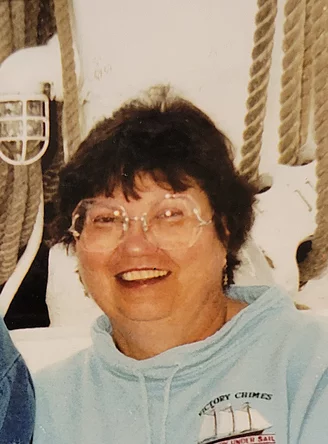Most Medical Debt Can No Longer Hurt Your Credit Score Under New California Law
Ana B. Ibarra / Thursday, Dec. 26, 2024 @ 9:20 a.m. / Sacramento
Every day people across the country skip medical care because of cost. Those who do seek medical help may end up with a balance they can’t pay off. That debt can hurt people’s credit scores, resulting in long-term financial burdens.
Starting Jan. 1, a new state law will prohibit health providers and debt collectors from reporting medical debt information to credit agencies. That means unpaid medical bills should no longer show up on people’s credit reports, which consumer advocacy groups say is a boon for patients with debt.
Here’s why: While the law will not forgive someone’s debt, by keeping it off credit reports, it might provide some reassurance that a hospital stay or trip to urgent care won’t later affect their credit standing. Lower credit scores usually result in higher interest rates and make it harder for people to qualify for a home rental, a car loan or even employment.
During legislative hearings, the law’s author, Sen. Monique Limón, a Democrat from Santa Barbara, contended that because people don’t choose to have a medical emergency or illness, this type of debt should not count against them. Supporters also argued that medical debt is more prone to inaccuracies because of billing mistakes by health providers and insurers.
The main three credit bureaus – TransUnion, Equifax and Experian — stopped reporting medical debt under $500 in 2023. But most people with medical debt owe far more than that. The national average for medical balance is $3,100, according to the Consumer Financial Protection Bureau. In California, an estimated 38% of residents carry some type of medical debt; that figure climbs to more than half for low-income residents, according to the California Health Care Foundation.
One key caveat is that patients can only take advantage of this law if the debt is owed directly to a medical provider or collection agency, but not when the debt is charged on a medical credit card or a general credit card.
This new law follows similar ones enacted in a handful of other states, including New York and Colorado. It also mirrors a proposal put forth by the Biden administration to do the same nationwide. However, with a new administration taking over in January, it is unclear whether the federal proposal will go anywhere.
Limón’s office explained that under the law patients have the right to sue a debt collector or provider who reports a medical debt to a credit bureau. Consumers may also choose to file a complaint with the state’s Department of Financial Protection and Innovation, which has authority over debt collectors. Consumers can also file a complaint with the California Attorney General’s office.
###
Supported by the California Health Care Foundation (CHCF), which works to ensure that people have access to the care they need, when they need it, at a price they can afford. Visit www.chcf.org to learn more.
CalMatters.org is a nonprofit, nonpartisan media venture explaining California policies and politics.
BOOKED
Yesterday: 8 felonies, 11 misdemeanors, 0 infractions
JUDGED
Humboldt County Superior Court Calendar: Today
CHP REPORTS
2000 MM299 E TRI 20.00 (HM office): Traffic Hazard
7400 Mm101 N Hum 74.00 (HM office): Assist with Construction
ELSEWHERE
RHBB: Humboldt Supes Approve a Four-Year Payment Plan for Measure S Cannabis Tax Debts
Governor’s Office: Governor Newsom, First Partner join LA fire survivors Jude and Rebecca Kessler for 94th annual Capitol Tree lighting ceremony
RHBB: Power Outage for 183 Customers in Covelo After Acura Crashes into Utility Pole
Governor’s Office: Governor Newsom creates new housing and transportation using nearly $1 billion paid by big polluters
2024 Year in Review: How Did California Pay for Everything?
Mikhail Zinshteyn / Thursday, Dec. 26, 2024 @ 9:18 a.m. / Sacramento
The podium before Gov. Gavin Newsom addresses the media to unveil his 2024-25 January budget proposal at the Secretary of State Auditorium in Sacramento on Jan. 10, 2024. Photo by Miguel Gutierrez Jr., CalMatters
To understand what happened with the state budget in 2024, you have to go back to 2023.
That year Gov. Gavin Newsom and Democrats who control the Legislature decided against raiding the state’s roughly $37 billion rainy-day fund despite a shaky fiscal picture. Those dollars came in handy as lawmakers grappled to plug an estimated $56 billion shortfall this year and next.
That the state had a major deficit is partly the fault of flying fiscally blind. In response to devastating storms, federal and state tax collectors extended filing deadlines last year well past the date lawmakers normally finalize the state budget. As a result, the revenue picture was incomplete. Basically, the state spending plan last year assumed more revenue than what ultimately flowed in, all because key data wasn’t available in time.
What are these deficit numbers in context? The state’s general fund budget — spending on schools, health care, prisons, green energy initiatives and more — from July 1 to next June is $298 billion, among the highest ever.. As recently as 2021, the state was spending $270 billion.
How’d lawmakers close this year’s budget chasm? For starters, they pulled $12 billion from the state’s reserves for the next two years. Lawmakers also cut most state agency allocations by almost 8%, eliminated thousands of vacant government jobs and got rid of a handful mid-sized spending programs — savings of $16 billion. Gone was a plan to have the state lend colleges money to build more student housing, $1.1 billion in affordable housing and about $500 million for a new program that would have paid college students to work in jobs tied to their majors.
Other savings came from freezing business tax credits. Then there’s the budget “fund shifts” lawmakers apply to the numbers that move money around to notch savings.
Among the few state programs that actually saw their budget grow? Public colleges and universities, though the University of California and California State University are slated to see those 8% cuts next year, unless the state budget picture improves.
2025 outlook
Revenues so far are higher than what was anticipated — thanks to big gains in the stock market, particularly in tech, and the income tax those investors pay. But the Legislature’s independent budget analysts say all that extra revenue doesn’t mean there’s room to spend more, in part because they’re projecting multi-billion dollar deficits through 2028-29. Plus, so much of what California spends money on now is expected to get more expensive.
Ultimately how much the state decides to spend on its vast array of programs — we’re not the fifth largest GDP in the world for nothing — depends considerably on the stock market and the incomes of California’s richest residents. Capital gains taxes from a hot Wall Street means big bucks for the state’s programs.
A Republican-led White House and Congress with an eye toward tax cuts might spur stocks to soar (though tax cuts often mean federal program cuts). But President-elect Donald Trump’s plan for heavy tariffs and mass deportations of undocumented workers could crimp the economy because of higher inflation and worker shortages.
###
CalMatters.org is a nonprofit, nonpartisan media venture explaining California policies and politics.
OBITUARY: Jessica Halley, 1986-2024
LoCO Staff / Wednesday, Dec. 25, 2024 @ 6:56 a.m. / Obits
It is with profound sadness and heavy hearts that we announce the loss of a beloved daughter, sister, mother, wife, aunt, and friend. After fighting cancer for more than five years, Jessica Halley passed away, surrounded by her loving family on September 4, 2024 at the age of 38 years old.
Jessica Marie Rabago was welcomed into the world by her parents, Robert Rabago and Sharon Witters, and her older sister, Emily Rabago, in Fortuna, on June 13, 1986. A “born and raised” Humboldt native, Jessica grew up as an active member in her community.
In 2007, she began what would be a lifelong career at Kay Jewelers in the Bayshore Mall. She became manager of the store in 2011, and received multiple awards and recognition of achievements including Kay Jewelers Training Manager of the year in 2016, and Manager of the Year in 2018. Many who knew and loved her, met her in that store. Everyone who’s known Jessica can attest that while she took great pride in exemplifying excellence in her career, her greatest achievement was her family.
On September 9th, 2013, Jessica married Kurtis Halley at the Witters Family Vineyard. In addition to saying “I do” at the altar, she joyfully said “I do” to a lifetime of being a second mom to her “bonus daughter,” Nevaeh. Together, and with an excited big sister, Nevaeh, Jessica and Kurtis welcomed their son, Calan. Two years later, their second daughter Rilynn was born. While their little family was finished growing, it turns out it wasn’t quite complete. Not soon after Rilynn was born, Jess’s sister Emily welcomed her little girl, Ellie to the pack. The new built-in besties grew up more like siblings than cousins. Both of the Rabago sisters were mother and auntie to everyone. Their family superpower is and always will be loving people as their own.
The Halley family settled in Hydesville, where Jessica poured her heart and soul into everything she did. While she was a remarkable boss and friend, her true motivation stemmed from her desire to create a nurturing home for her babies. Every achievement she chased was birthed from her love for them, and her commitment to give them everything she could. She and her family built an incredible support system, brick by brick. She left this earth surrounded by more love than any one person could fathom. She would want nothing more than to express overwhelming gratitude to everyone who rallied around her and her family during her fight.
Jessica’s legacy is one of love and sacrifice. She fought cancer head on for every last second she could get with her children, here on earth. What kept Jess strong, next to her longing to be with her kids, was her faith. Even in the depths of how unfair this was to her and her family, she never became bitter at her creator or His plan. She leaned into the comfort of knowing that His hands were on her and her family. She never wavered. One of her favorite scriptures is Psalms 46:10; “Be still and know that I am God.” Whenever uncertainty or fear tried to rush in, she was steadfast in her ability to stand still and know that God had her.
Jess lives on in Humboldt, forever permeating these grounds. Not just in the eyes and giggles of her children, but woven through the very fabric of the earth. The ocean breeze carries her breath, and the serenity of the crashing waves is the peace you feel in her presence. The redwoods, having been rooted for centuries, only wish they had her strength. Each one, just like us, stands a little taller having known her. Every bit of sunshine through the fog is her smiling at you on your worst day, telling you everything is going to be okay. The skies are as big as her heart, and the sunsets are only half as beautiful.
Our Jess is forever loved and forever remembered.
The family is hosting a Celebration of Life service on January 11, 2025 from 11 a.m. to 2 p.m. at The Gene Lucas Community Center — 3000 Newburg Road, Ste. C, Fortuna CA 95540.
###
The obituary above was submitted on behalf of Jessica Halley’s loved ones. The Lost Coast Outpost runs obituaries of Humboldt County residents at no charge. See guidelines here. Email news@lostcoastoutpost.com.
OBITUARY: Delores Nason McBroome, 1948-2024
LoCO Staff / Wednesday, Dec. 25, 2024 @ 6:56 a.m. / Obits
Delores
Nason McBroome died Dec. 16, 2024, peacefully in her home. Born July
2, 1948, to Jean and Harold Nason, Delores was the youngest and only
daughter of two children. And of course, brilliant!
She graduated in the top 10 percent in her class from Eureka High School in 1966, earning the Bank of America award. She earned her Bachelor of Arts and Master of Arts degrees at what was then Humboldt State College. In 1976 Delores began her stellar career at Humboldt State University as a part-time lecturer in the History Department. Within a few years, she was also appointed to the position of secretary of the History Department. While working full time as department secretary and teaching as a part-time lecturer, she pursued her doctorate at the University of Oregon (Go Ducks!)
In 1991, she was awarded her Ph.D and received her tenure-track faculty appointment in the Department of History at Humboldt State University. (Did we say she was brilliant or what?). Her first field was American History, with specialties in California history, labor history and teacher preparation. During her academic career she served as the history department chair and as program leader for Women’s Studies. She also directed the History Day Project for many years. She was the History Department’s representative to the American Indian Civics Project and had many connections with local schools and teachers. All this was just the tip of the iceberg as to the depths of her brilliance. Yes, she taught them all! And was loved by contemporaries, many whom she loved, or respected, in return. She retired at the rank of professor in 2009, but never lost her love of history or reading.
She was a devout Catholic. Confirmed at St Bernard’s Church the age of 14, she carried on her love of church, and caring for others daily. She loved cooking and, of course, creating food, pastries and cookies, which fed her masses and was shared by all those who knew her, especially her friends, who would spend hours laughing and gossiping over coffee, tea and sweets. Cooking with Grandma Dee was a common occurrence, as was a phone call to share a fun new recipe or creative dish. She always had a ready smile, story and laugh to share.
She was married to William McBroome Sr. on June 7, 1981, and in doing so inherited a passel of children. She is survived by her 8 stepchildren, 16 grandchildren and 18 great-grandchildren, and if you want names, we will add four paragraphs here!!
Her memorial will be held at St Bernard’s church on January 25, at 10:30 a.m. (615 H St., Eureka). A reception will be held at the Masonic Hall, second floor, after the service, with light refreshments for any who wish to attend. The address is 517 G Street Eureka.
She is now with her husband, William McBroome Sr., and know she is at peace.
In lieu of flowers, any donations may be given to St Bernard’s church, where she was beloved member of the congregation.
###
The obituary above was submitted on behalf of Delores McBroome’s loved ones. The Lost Coast Outpost runs obituaries of Humboldt County residents at no charge. See guidelines here. Email news@lostcoastoutpost.com.
OBITUARY: Jeannie Rush (Pattee), 1957-2024
LoCO Staff / Wednesday, Dec. 25, 2024 @ 6:56 a.m. / Obits
Jeannie Rush (Pattee), 67, was born on November 26, 1957 and passed away on December 7, 2024. She lived in Mad River. She moved there with her mother and stepfather in 1964. She attended Van Duzen Elementary School and graduated from Southern Trinity High School.
Jeannie had a love for horses all her life, and growing up, she was always riding her horses all over the hills of Mad River. One of her favorite hobbies! Jeannie worked for the U.S. Forest Service, Six Rivers District. She also worked at the Dinsmore Store and the Mad River Store. She was a bartender at the Six Rivers lodge and she worked at the Southern Trinity Health Services. She retired the year that COVID hit, worried that she might bring it home to her husband, who has a compromised immune system, due to diabetes.
She is survived by her husband, Pat Rush, who for many years was an active member of the popular Mountain Magic Band; her mother, Rosie Straw; her aunt Pricilla Roberts; her stepson, Beau Rush; two stepsisters Crystal Straw Jakubczak and Jan Straw; and stepbrother James Donald Straw.
She is predeceased by her sister, Michelle Lorene Straw; her father, George Pattee; her stepfather, Don Straw; and her Uncle Joel Roberts.
Graveside services will be held on December 30, 2024 at 2 p.m., at the Mountain Meadow Cemetery on Hastings Tie Rd, Route. 1 Monica Sayad will be officiating the service.
###
The obituary above was submitted on behalf of Jeannie Rush’s loved ones. The Lost Coast Outpost runs obituaries of Humboldt County residents at no charge. See guidelines here. Email news@lostcoastoutpost.com.
Landslide Closes Avenue of the Giants Near Weott
Isabella Vanderheiden / Tuesday, Dec. 24, 2024 @ 2:20 p.m. / Traffic
###
You might want to rethink your travel plans if you’re taking the over-the-river-and-through-the-wood route to grandma’s house for Christmas this year, as State Route 254 (Avenue of the Giants) is closed due to an active landslide near Weott. There is no estimated time for reopening, according to Caltrans District 1.
Avenue of the Giants is also closed a little further north, near Pepperwood, due to flooding. The road is closed between Holmes Flat and Barkdull roads.
Be sure to check Caltrans’ Quickmap before heading out on your holiday travels. Merry Christmas, Humboldt!
Why Amazon and Starbucks Are Striking Now, and What It Means for Labor Under Trump
Levi Sumagaysay and Jeanne Kuang / Tuesday, Dec. 24, 2024 @ 8:11 a.m. / Sacramento
Manny Ruiz strikes alongside other workers with Teamsters 2785 at an Amazon warehouse in San Francisco on Dec. 19, 2024. Photo by Jungho Kim for CalMatters
Striking Amazon and Starbucks workers are on picket lines instead of delivering last-minute presents or handing customers Christmas-themed drinks, as their unions pressure the companies during the holidays — and before a less union-friendly president is sworn into office.
The workers accuse their employers of refusing to recognize their unions or to bargain in good faith. They have been organizing for more than four years but have yet to land a contract. Some have filed complaints with the National Labor Relations Board, alleging union-busting behavior by the companies, including coercion, threats, discipline and firings. Amazon and Starbucks have also filed complaints against the unions, accusing them of coercion, violence and illegal strikes.
Soon, the board will likely be less sympathetic to unions after the Senate earlier this month failed to extend the term of then-Chairperson Lauren McFerran. The five-member board had three Democratic members including McFerran. President-elect Donald Trump will have the chance to appoint two more Republicans.
“The Trump NLRB the first time around was the most right-wing, anti-labor NLRB in the entire nearly 90-year history of the board,” said William Gould, a former chairperson of the National Labor Relations Board during President Bill Clinton’s administration and a professor emeritus at Stanford University.
Gould said he doesn’t remember “any board so eager and activist to reverse what had gone on before.” Because of that, he expects that “most of what the Biden board has done will be overturned by the Trump board,” he said.
Most of what the Biden board has done will be overturned by the Trump board.
— William Gould, former chairperson, National Labor Relations Board
Karoline Leavitt, a spokesperson for the Trump transition team, did not respond to specific questions about the board. In an email, she instead described the president-elect as a champion of workers, writing, “The working men and women of America have been left behind, which is why President Trump and Republicans saw historic support from working class voters. President Trump will keep his promise to the hardworking men and women of America by bringing jobs back home, restoring American manufacturing, slashing inflation, and cutting taxes.”
An analysis of Trump’s policies by the nonpartisan Tax Foundation found his proposed tax cuts would disproportionately benefit higher-income taxpayers, while his planned tariffs would fall hardest on the middle and working class.
Labor leaders said a reversal of Biden-era labor board decisions does not bode well for their unionizing efforts — many of them in, or started in, California — though they added that they do not expect workers and unions to quit trying.
California unions are preparing to ask state legislators and Gov. Gavin Newsom to toughen up the state’s own policies as “insurance” against potentially weaker federal rules. The California Labor Federation plans to revive a long-shot bill Newsom vetoed last year that would have allowed workers to receive unemployment benefits if they strike. They also will push state lawmakers to protect private-sector unionization, in the event that right is eroded in federal law..
“We want to make sure we can preserve what we have,” said Labor Federation leader Lorena Gonzalez.
Under the Biden administration, the NLRB’s director has taken more aggressive action to enforce laws that require employers to bargain in good faith and prohibit retaliation, and taken a series of legal positions favorable to organizing workers.
They include what John Logan, professor and chairperson of Labor and Employment Studies at San Francisco State University, said was “the most important action” of the board in the Biden years: a 2023 decision that established a new standard on when employers must bargain with unions without a representation election. If a majority of employees vote to unionize, employers must recognize and bargain with the union, or else seek an election within 14 days. If employers engage in unfair labor practices during the process, the board could order them to bargain with the union.
He expects the board to reverse that ruling under Trump.
Issues at Amazon
Already, companies have been resisting that decision.
Amazon workers are striking in part to try to force the company to bargain with some of its subcontracted workers. They cite a Los Angeles regional NLRB director’s August 2024 finding that the e-commerce giant was a “joint employer” of a group of delivery drivers, who work for a nationwide network of contractors the company calls “delivery service partners.” That means the finding holds Amazon legally responsible for the wages, working conditions and treatment of the subcontracted workers. If the determination withstands lengthy legal challenges, that could open the door for the workers to bargain directly with Amazon.
The regional director’s finding stemmed from a group of Palmdale drivers who worked for the contractor Battle-Tested Strategies and who became the first Amazon delivery drivers in the country to unionize in April 2023. Amazon ended its contract with Battle Tested — retaliation, the Teamsters claimed, for the union drive. Amazon denied that, saying it cut the contract over “repeated” breaches by the delivery company, and the regional director dismissed the retaliation claim.
But the regulator said both Amazon and Battle Tested failed to negotiate with the drivers’ union on working conditions, including the effects of the contract termination on the drivers’ jobs. In September, the agency filed a complaint before the labor board trying to force Amazon to bargain; the larger company in turn sued the NLRB director and the board in federal court, seeking to halt any order to bargain and arguing the board itself is unconstitutional.
Whether larger companies should be considered employers of the workers of their contractors is an unsettled area of federal labor law that has been repeatedly reversed by different labor relations boards since the Obama administration. It’s another instance in which the current board made it easier to unionize workers but a new board under Trump could very well reverse the decision.
Amazon warehouse worker Leah Pensler, 26, helped organize her coworkers at a delivery facility in San Francisco. Pensler, who walked the picket line Thursday, told CalMatters that since more than 100 workers at the facility signed union cards and joined the Teamsters in October, the company has denied they formed a union.
Pensler also said “Amazon has worked hard to scare workers by (saying) that with union representation, people may not receive the same working conditions and pay we currently have.” The labor board’s regulators made similar charges in its complaint against Amazon in the Palmdale case.
Eileen Hards, a spokesperson for Amazon, said “the Teamsters promise a lot of things that they can’t guarantee.”
Hards also called the strikes by the Teamsters illegal. For one thing, she said, Amazon does not consider the delivery drivers on strike to be its employees. And she said the San Francisco facility did not hold a vote, and that “in order to be recognized they have to file with the NLRB,” which those workers did not.
But Emily Orlach, a spokesperson for the Teamsters, said that under the new standard established in 2023, Amazon is legally required to negotiate with the workers.
Also, Amazon, SpaceX and a few other major corporations that have been accused by the labor board of violating workplace rights have in recent years argued before the federal courts that the board itself is unconstitutional.
The Amazon strike is ongoing.
Issues at Starbucks
Starbucks Workers United member baristas at several stores in different states walked off the job beginning Friday. The union says the strikes are now in 13 states and will spread to more than 300 stores Tuesday, continuing through Christmas Eve.
JJ Dizon, a barista in Yuba City, said during a virtual announcement Thursday that she was proud of the progress the union has made in bargaining with Starbucks — that the union was in “the home stretch” of months of negotiations for a contract on behalf of 537 union stores and more than 10,000 workers. The company employed about 211,000 workers in the United States as of September, according to its latest annual financial report.
But other workers who spoke on the call said the company’s new chief executive, Brian Niccol, took the reins in September and “started to chill bargaining.” They characterized Starbucks’ proposed 2% raises as “insulting.”
“The labor movement has reached a tipping point while the CEOs remain in their towers,” Dizon said.
Starbucks spokesperson Phil Gee said in an emailed statement ahead of the strike announcement that it was “disappointing” that the union was thinking of striking, considering that the two sides had “reached 30 meaningful agreements on dozens of topics Workers United delegates told us were important to them, including many economic issues.”
“If the delegates want to serve the partners they represent, they need to continue the work of negotiating an agreement,” Gee said.
Logan, the SF State professor, said that for both the Starbucks and Amazon workers, “this might be their last, best chance to pressure the companies in public before Trump comes into office.”
This might be their last, best chance to pressure the companies in public before Trump comes into office.
— John Logan, professor of Labor and Employment Studies at San Francisco State University
Brandon Dawkins is an officer with Service Employees International Union Local 1021, which has been organizing Starbucks stores in Northern California, 22 of which have voted to unionize so far. Fifty-three stores in the state have taken union-authorization votes since 2022, 37 of which have voted to unionize. He said Starbucks workers have lived through a previous Trump NLRB before, but acknowledged there could be more changes this time around.
“We have to continue to organize no matter what,” Dawkins said.
The future of organizing
Among the other things Gould, the former labor board chairperson, said the Trump board will likely reverse is the 2021 decision requiring colleges to treat graduate students as employees, which gives them the right to bargain collectively.
“That won’t eliminate collective bargaining at the universities,” he said. “But it will be a signal to universities to exploit any advantage they have, and to weaken unions that are already there.”
Gonzalez of the California Labor Federation said she doesn’t expect a tougher legal landscape to stem a rising tide of union activity.
She said the current labor board’s rulings have been “nice to have,” but even under a more worker-friendly administration, it’s been hard for regulators to force large employers such as Amazon and Starbucks to the bargaining table.
“It’s not like we had a magic bullet,” she said. The companies “will continue to fight, and yet, workers are still coming together and demanding their rights.”
###
CalMatters.org is a nonprofit, nonpartisan media venture explaining California policies and politics.





